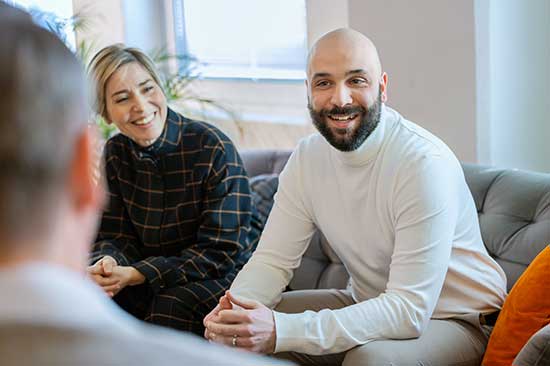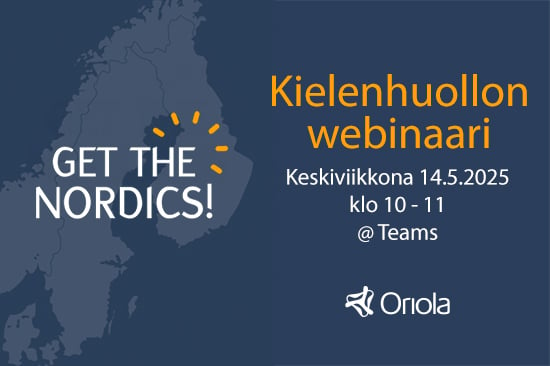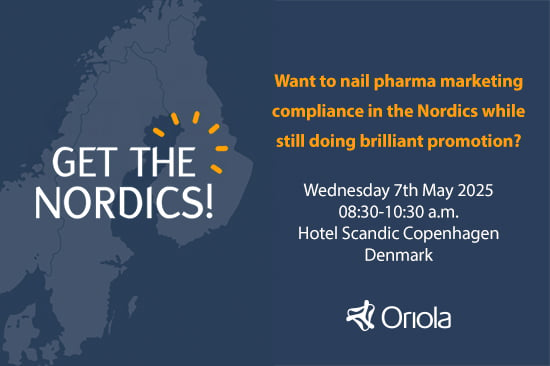The best translation is the fruit of collaboration
1.3.2019
Health care professionals and patients have the right to receive high-quality information about drugs and treatments in their native language. The evolution of medicine and new drugs is also reflected in the translation of texts concerning medicines and different types of treatments. Texts describing new medicinal treatments pose challenges for translators, who continuously need to be learning and educating themselves. A high-quality translation product requires careful background work, expertise in the subject area and effective co-operation with the client.
In their work, doctors, nurses and patients encounter translated texts every day. Marketing authorisations for new medicines are often granted for the entire European Union at the one time. This means that product information, such as the package leaflet and summary of product characteristics, is translated into the local language from an English source text. On the other hand, the reporting of clinical trials and adverse effect monitoring requires the translation of texts written in the Nordic languages into English.
Pharmaceutical companies often purchase all or most of their translations from external service providers or, at least, have the translations reviewed by professional translators. Translators who specialise in medicine have a clear goal in mind: to create comprehensible content for the readers, both health care professionals and patients.
– We don’t translate words or sentences, we translate meanings, says Liisa Mahlamäki, Translations Team Lead at Oriola. She has more than 30 years of experience as a translator specialised in medicine and pharmacology.
According to Mahlamäki, a translator must aim to create a high-quality text that gives the reader a fluid reading experience. A translation is successful when the reader does not realise that it is a translation – a good, fluent text that communicates the original message in a style that is typical for each specialty, without forgetting grammatical correctness. The translator also needs to be familiar with medical terminology and the conventions of the field.
The target audience is at the heart of everything
When starting a translation assignment, the translator needs to find out who the text is intended for to make sure that the style and language are appropriate for the reader. Today, a substantial amount of information is also published online, which places particular importance on the correctness and quality of the text.
– Addressing a doctor is completely different from addressing a patient or consumer. When talking to a doctor, it's not necessary or helpful to explain what hypertension means. However, when talking to a patient who has been prescribed blood pressure medication, you absolutely need to say “high blood pressure” and not “hypertension”, Mahlamäki illustrates.
It's also important to consider the genre of the text. Sometimes there is very little leeway, and translations of summaries of product characteristics, for example, must closely follow the guidelines of the European Medicines Agency.
– These are normative texts with precise templates available, but even the medical authorities encourage the creation of fluent, high-quality texts that are faithful to the source text, rather than word-for word translations.
A good translator focuses on fact-finding
Research is a central part of translation work. Before starting to actually translate, the translator needs to become familiar with the therapeutic area of the product and other potential texts relating to the subject. Understanding the mechanism of action of a new product requires its own kind of knowledge. Sometimes you even have to create new words when translating. In these cases, co-operation with the client and other parties is crucial. Mahlamäki compares translating to detective work.
– We search for and verify information from multiple sources. There are, of course, many good term banks and expert sources available to help translators. Often the best helper is one of the experts on our own team, as the Oriola translation team has expertise in nursing and chemistry in addition to linguistic proficiency. There are also many other specialists working at Oriola in all phases of the pharmaceutical value chain, and we can ask them for help when necessary, Mahlamäki says.
The best end result is achieved by holding discussions with the client at the very beginning of the assignment and by listening attentively to the client’s wishes. In Oriola's versatile translation team, the translation work itself is performed with passion and professional pride.


